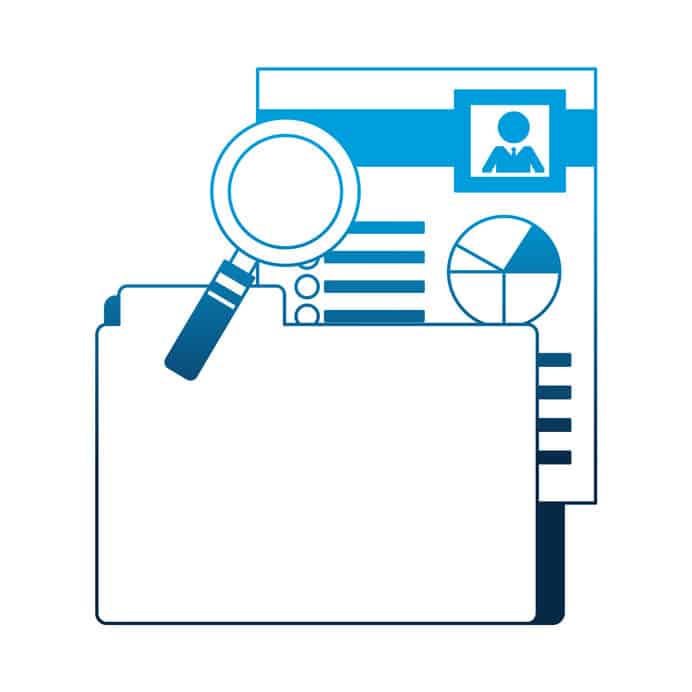A critical part of any project, and often the difference between success and failure, is gathering functional requirements before the development process starts. A proper definition and documentation of these requirements make things simpler for everyone; from business analyst to the customer, and from the development team to the end-user. It helps create better estimates, reduces costs, improves user satisfaction, and shortens the duration of the project.
On the other hand, failure to do this can lead to a lack of communication and understanding between the stakeholders involved in the project and cause constant delays and numerous revisions. Ultimately, poorly defined functional requirements can result in a faulty and unsuccessful product. Good functional requirements document, or FRD, enables smooth implementation of the project and stands as an indicator of competence and capability of a business analyst.
Table of Contents
What is a Functional Requirements Document (FRD)?
The functional requirements document (FRD) is a formal document detailing the requirements required to achieve business needs. The document serves the purpose of a contract so that the client can agree what they deem acceptable for the capabilities of the product. The functional requirements document is a core document for product development.
Functional requirements specified in the document determine the intended behaviour of the system. The FRD lays out the system’s functionality in detail by describing that expected behaviour which may be realised as tasks, services, or functions. The document makes clear how the project team plans to satisfy the business need. The contents of the document explain the said business need, current and desired state, and functional requirements.
The FRD is independent of the solution. It doesn’t provide information on how the product will be developed, how it will work, or what it should be, but rather what the product should do. As such, the functional requirements commonly come in the form of requirements statements. The functional requirements document commonly includes a list of requirements statements organised by the feature with identified priorities.
This type of documentation is very important for the whole development as it presents a link between the business and technology sides of the process. It’s a point where stakeholders and technical teams meet and it further ensures cooperation between the two sides. The FRD reiterates the business needs by turning them into functional capabilities and features that need to be achieved by the product or system.
It makes sure that the team working on the project fully understands the requirements and is concentrating their efforts to develop a solution that will satisfy business needs. However, the functional requirements document doesn’t force the teams to commit to specific designs nor does it impose the solution. Instead, it allows them to determine in which way they will develop the project so it answers the requirements.
In most cases, the functional requirements document is created by a business analyst. However, it’s a good idea that they do it under the supervision technical expert who can offer more insight into the technical side of things, for example, a system architect or a qualified engineer. Furthermore, during the preparation of the FRD, the business analyst should consult the project manager and all stakeholders. This is necessary to perform a proper analysis of the requirements and gain a full understanding of them.
In agile context a product owner or product manager may choose to specify product requirements using a product requirements document (PRD) 
What is the Benefit of a Functional Requirements Document (FRD)
Documenting the functional requirements provides several important benefits to the organisation and to the process of developing a solution.
- It provides a single reliable source of requirements for the stakeholders. FRD helps clear out all misunderstandings and keeps the development teams as well as those on the business side of operation all on the same page and working towards the common objective. It ensures that there’s transparency, consensus, and agreement among all the stakeholders.
- It reduces the cost and shortens the overall duration of the project. Clearly defined functional requirements ensure that the teams have a shared understanding and a written record of what they’re required to do, eliminating the need for frequent meetings.
- It makes the project more predictable. With well-documented and detailed functional requirements teams can more accurately estimate the time needed for the development and potential budget.
- It helps timely identification of potential issues. When the functional requirements are thoroughly captured during the discovery phase, it’s easier to identify the error on time and fix them. Problems discovered during the phase of gathering the functional requirements are the easiest and cheapest to correct. In addition, documenting functional requirements and analysing them is helpful for identifying the missing requirements. Furthermore, the functional requirements documentation is useful as a reference for checking whether the product provides all the functionalities required by the client.
What are the Sections (i.e. Elements) of a Functional Requirements Document (FRD)?
The functional requirements document outlines the functions required to satisfy business needs, but the format of the document itself may vary depending on the product. While there’s no standard format, there are some common core elements that appear in almost every FRD.
General Information
The first section of the FRD always includes details on the purpose and scope of the project, documents used as a source, and general information of key personnel. This section often includes:
- Project description – the brief overview of the project contains information on the background of the project or conditions that created the need for the product. It also details the intended purpose of the project by describing the business objectives. Commonly, this section also lists the assumptions and constraints of the project. Assumptions are future situations that may occur and are outside of the control of the project but still may influence the outcome. Constraints are all conditions beyond the control of the project that may in any way limit the development options. These may include government legislature, standards pertaining to the solutions, or strategic decisions.
- Points of contact – the list of all the key participants in the project along with their roles, names, and titles.
- Document references – this section lists and names all the documents used as sources while creating the FRD. These may include white paper analysis, meeting summaries, and any other document contribution to the functional requirements document.
Functional Requirements
The functional requirements section is the core part of the FRD. It describes the essential functionalities of the product. These are mainly the traditional requirements statements. Among others, this section usually includes the following requirements:
- Data requirements – this FRD section describes the data which needs to be supported by the system. It does so by providing a logical data model consisting of entity definitions, entity-relationship diagrams, and attribute definitions. This portion of the FRD also may include data migration and conversion requirements. Sometimes it features data flow diagrams detailing the conceptual flow of data. The requirements in this section do not describe the physical database.
- Process requirements – process requirements may be shown through text, data flow diagrams, or any other instrument that can provide key information on the processes supported by the product.
Non Functional Requirements
In this section, the FRD explains the non-functional requirements
- Role-based security – the focus of this section is on the need to control access to data. It details who can view or modify the data. The security element of the FRD also describes the consequences for the potential breach of security, the type of security needed, and the need to control access by class of users, date attribute, and based on system function. In addition, this section states if the security measures need to be certified by an independent authorised organisation.
- Audit trail – in this section, the functional requirements document lists which activities will be recorded in the audit trail of the product. The list of data should be recorded for each activity in the document.
- Data currency – here, the document answers how current the data must be when the system responds to the request for that data. The data currency should be specified for each type of potential data request.
- Reliability – the reliability element of the FRD details the probability that the product will perform correctly and completely without being aborted. It should state the minimum acceptable level of reliability by defining the mean time between failure, mean time to failure, and mean time to repair. This section should also list the potential damages that can come as a result of a system failure.
- Recoverability – this section of the functional requirements document deals with the system’s ability to restore data and function in the event of a failure. It details, among other things, how soon the system must be functional after the detection of a failure and what level of data currency needs to be restored in case of database corruption.
- System availability – in this section, the FRD defines the time went the product must be available for use. Taking into consideration maintenance requirements, it states the hours when the system must be available to users. It also defines the peak usage times when the unavailability is least acceptable.
- Fault tolerance – the fault tolerance section describes the ability of the system to remain at least partially operational during failure. If lists the functions that are not essential and don’t need to be available at all times. On the other hand, it also lists the functions that are necessary for the system to be operational. Of course, this isn’t always applicable, as with some systems the loss of one function eliminates the need for other functions to work.
- Performance – in this element, the FRD describes the requirements for response time for queries, throughput, and expected volume of data and user activity.
- Capacity – the capacity element of operational requirements lists the expected volumes of data and corresponding expected capacity. The capacity requirements should be stated in terms of business (number of user applications, etc.) and not as system memory or disk space requirements.
- Data retention – in this section the FRD defines the length of time for which the data should be kept and retained.
Requirements Trace Ability Matrix
The functional requirements and their implementation throughout the process are tracked by using a requirements traceability matrix
The matrix includes every requirement along with its associated section number. The matrix is constantly updated throughout the project to reflect the status of every requirement, so it can list each of them and what product component it addresses once the product is ready for testing. The requirements traceability matrix should include columns for requirement description, its reference in the functional requirements document, test plan reference, and verification method.
Glossary
Glossary commonly comes at the end of the functional requirements document and lists business terms pertaining to the product. It shouldn’t include any tech-related terms.
Besides the elements mentioned above, depending on the product and process, the FRD may include other sections, including methodology, modelling illustrations, other requirements, or business process and workflow.
What is the Difference Between a Business Requirements Document (BRD) and Functional Requirements Document (FRD)?
What is the difference between a BRD
A BRD should answer questions like “what does the business need this system to do?” and “what are the goals of this project?” An FRD, on the other hand, should answer questions like “how will this system work?” and “what functions does this system need to perform?”
In short, a BRD is more focused on the big picture, while an FRD is more focused on the details.
Conclusion – Functional Requirements Document (FRD)
A functional requirements document (FRD) is critical core document to gather the requirements before the development process starts.
A well documented functional requirements document, or FRD, provides the basis for a smooth development of the product solution.



